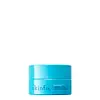What's inside
What's inside
 Key Ingredients
Key Ingredients

 Benefits
Benefits

 Concerns
Concerns

 Ingredients Side-by-side
Ingredients Side-by-side

Theobroma Cacao Seed Butter
EmollientBis-Diglyceryl Polyacyladipate-2
EmollientButyrospermum Parkii Butter
Skin ConditioningGlyceryl Rosinate
PerfumingHydrogenated Polyisobutene
EmollientCanola Oil
EmollientCrambe Abyssinica Seed Oil Phytosterol Esters
EmulsifyingOlea Europaea Oil Unsaponifiables
Skin ConditioningWater
Skin ConditioningIsohexadecane
EmollientHydrogenated Lecithin
EmulsifyingRetinyl Retinoate
Skin ConditioningCurcuma Longa Root Extract
MaskingSodium Hyaluronate
HumectantTripeptide-1
Skin ConditioningCera Alba
EmollientSqualene
EmollientPalmitic Acid
EmollientAroma
C12-16 Alcohols
EmollientEthylene/Propylene/Styrene Copolymer
Glycine Soja Oil
EmollientButylene/Ethylene/Styrene Copolymer
Xanthan Gum
EmulsifyingCitric Acid
BufferingPseudoalteromonas Ferment Extract
HumectantSalicylic Acid
MaskingSodium Salicylate
PreservativeTocopherol
AntioxidantLimonene
PerfumingBeta-Sitosterol
Emulsion StabilisingEucalyptus Globulus Leaf Oil
PerfumingTocopheryl Acetate
AntioxidantPhenoxyethanol
PreservativeTheobroma Cacao Seed Butter, Bis-Diglyceryl Polyacyladipate-2, Butyrospermum Parkii Butter, Glyceryl Rosinate, Hydrogenated Polyisobutene, Canola Oil, Crambe Abyssinica Seed Oil Phytosterol Esters, Olea Europaea Oil Unsaponifiables, Water, Isohexadecane, Hydrogenated Lecithin, Retinyl Retinoate, Curcuma Longa Root Extract, Sodium Hyaluronate, Tripeptide-1, Cera Alba, Squalene, Palmitic Acid, Aroma, C12-16 Alcohols, Ethylene/Propylene/Styrene Copolymer, Glycine Soja Oil, Butylene/Ethylene/Styrene Copolymer, Xanthan Gum, Citric Acid, Pseudoalteromonas Ferment Extract, Salicylic Acid, Sodium Salicylate, Tocopherol, Limonene, Beta-Sitosterol, Eucalyptus Globulus Leaf Oil, Tocopheryl Acetate, Phenoxyethanol
Cocos Nucifera Oil
MaskingBis-Diglyceryl Polyacyladipate-2
EmollientTheobroma Grandiflorum Seed Butter
Skin ConditioningShorea Stenoptera Seed Butter
EmollientPolyhydroxystearic Acid
EmulsifyingMyristic/Palmitic/Stearic/Ricinoleic/Eicosanedioic Glycerides
Skin ConditioningCocoyl Hydrolyzed Collagen
CleansingOryza Sativa Bran Extract
Skin ConditioningPalmitoyl Isoleucine
Skin ProtectingJojoba Oil/Macadamia Seed Oil Esters
Skin ConditioningWater
Skin ConditioningHelianthus Annuus Extract
EmollientAvena Sativa Kernel Extract
AbrasiveAllantoin
Skin ConditioningSqualene
EmollientAlaria Esculenta Extract
Skin ProtectingTocopherol
AntioxidantRosmarinus Officinalis Leaf Extract
AntimicrobialPhytosteryl Macadamiate
Skin ConditioningPhytosterols
Skin ConditioningCaprylic/Capric Triglyceride
MaskingDipalmitoyl Hydroxyproline
Skin ConditioningPalmitic Acid
EmollientDextrin Palmitate
EmulsifyingCocos Nucifera Oil, Bis-Diglyceryl Polyacyladipate-2, Theobroma Grandiflorum Seed Butter, Shorea Stenoptera Seed Butter, Polyhydroxystearic Acid, Myristic/Palmitic/Stearic/Ricinoleic/Eicosanedioic Glycerides, Cocoyl Hydrolyzed Collagen, Oryza Sativa Bran Extract, Palmitoyl Isoleucine, Jojoba Oil/Macadamia Seed Oil Esters, Water, Helianthus Annuus Extract, Avena Sativa Kernel Extract, Allantoin, Squalene, Alaria Esculenta Extract, Tocopherol, Rosmarinus Officinalis Leaf Extract, Phytosteryl Macadamiate, Phytosterols, Caprylic/Capric Triglyceride, Dipalmitoyl Hydroxyproline, Palmitic Acid, Dextrin Palmitate
 Reviews
Reviews

Ingredients Explained
These ingredients are found in both products.
Ingredients higher up in an ingredient list are typically present in a larger amount.
This ingredient is lipid-based synthetic skin-conditioning agent derived from adipic acid and a mixture of fatty acids. It is often called a lanolin substitute.
As an emollient, it helps soften and hydrate the skin. Emollients create a barrier on the skin to trap moisture in.
Due to its fatty acid base, it may not be Malassezia folliculitis safe.
Learn more about Bis-Diglyceryl Polyacyladipate-2Palmitic Acid is a fatty acid naturally found in our skin and in many plant and animal sources. In cosmetics, it is usually derived from palm oil. It serves many purposes in skincare, acting as a cleanser, emollient, and emulsifier.
As an emollient, palmitic acid helps soften and smooth the skin by preventing water loss. In cleansers, it helps remove oil and dirt while creating foam.
Its emulsifying properties help stabilize products by keeping water and oil-based ingredients from separating.
This may not be suitable for fungal acne-prone skin, as fatty acids like this can sometimes trigger breakouts in sensitive individuals.
Learn more about Palmitic AcidSqualene is naturally found in plants and animals, including our skin and sebum. It is a lipid our bodies naturally produce and makes up about 10-12% of the oil on our skin. Our skin produces squalene to keep itself naturally hydrated.
This ingredient is a potent antioxidant and can help fight against skin damage.
Sources of squalene include olives and rice bran. Some sources may be animals such as from shark liver.
Squalane comes from squalene and is created using hydrogenation. Squalane is lighter than squalene.
Hydrogenation is the conversion from unsaturated oil to saturated oil. This makes squalane more stable and have a longer shelf life than squalene.
Read more about squalane with an "a".
Learn more about SqualeneTocopherol (also known as Vitamin E) is a common antioxidant used to help protect the skin from free-radicals and strengthen the skin barrier. It's also fat soluble - this means our skin is great at absorbing it.
Vitamin E also helps keep your natural skin lipids healthy. Your lipid skin barrier naturally consists of lipids, ceramides, and fatty acids. Vitamin E offers extra protection for your skin’s lipid barrier, keeping your skin healthy and nourished.
Another benefit is a bit of UV protection. Vitamin E helps reduce the damage caused by UVB rays. (It should not replace your sunscreen). Combining it with Vitamin C can decrease sunburned cells and hyperpigmentation after UV exposure.
You might have noticed Vitamin E + C often paired together. This is because it is great at stabilizing Vitamin C. Using the two together helps increase the effectiveness of both ingredients.
There are often claims that Vitamin E can reduce/prevent scarring, but these claims haven't been confirmed by scientific research.
Learn more about TocopherolWater. It's the most common cosmetic ingredient of all. You'll usually see it at the top of ingredient lists, meaning that it makes up the largest part of the product.
So why is it so popular? Water most often acts as a solvent - this means that it helps dissolve other ingredients into the formulation.
You'll also recognize water as that liquid we all need to stay alive. If you see this, drink a glass of water. Stay hydrated!
Learn more about Water